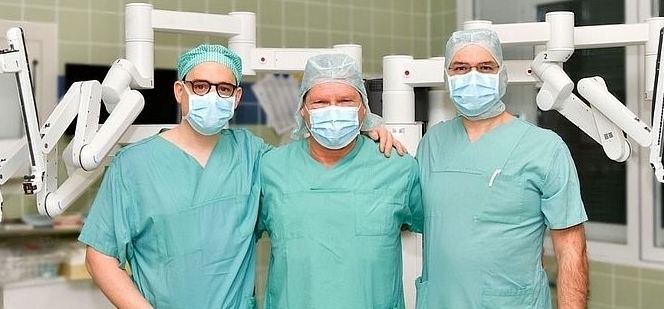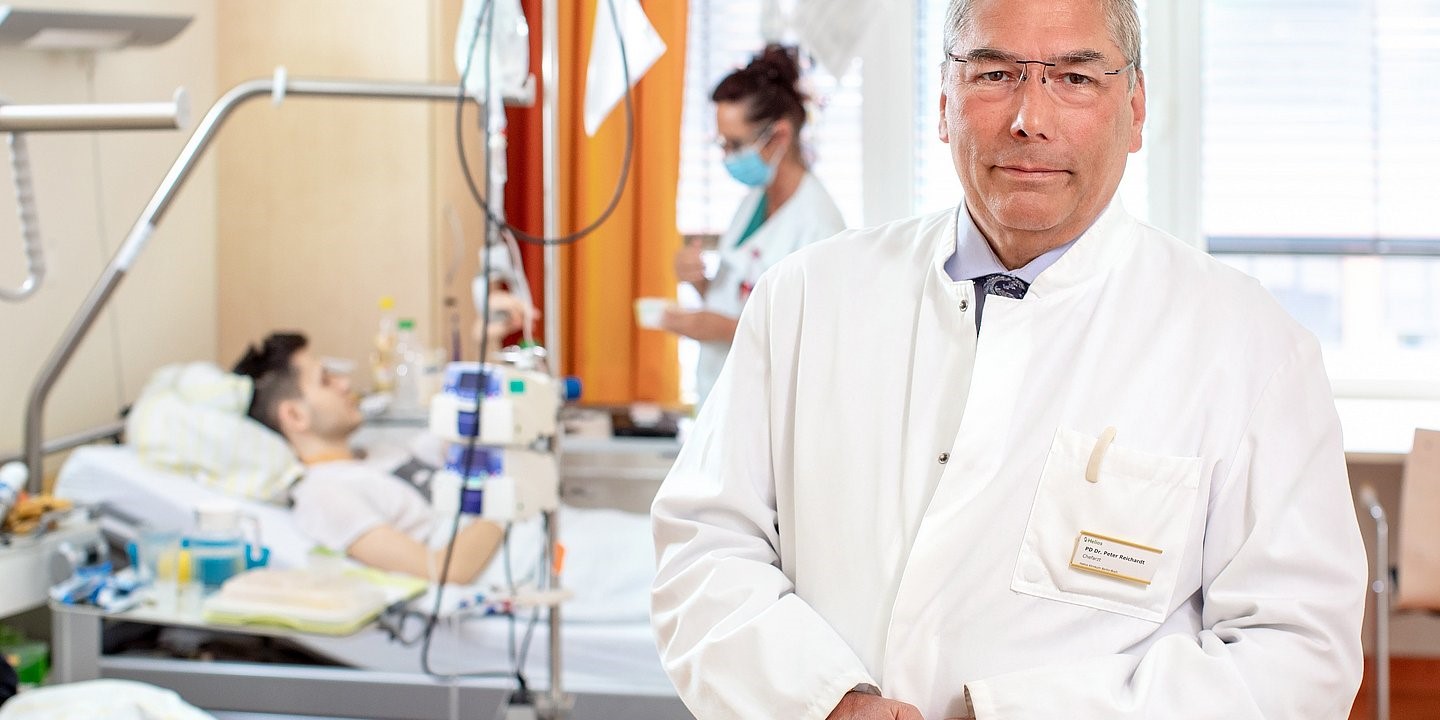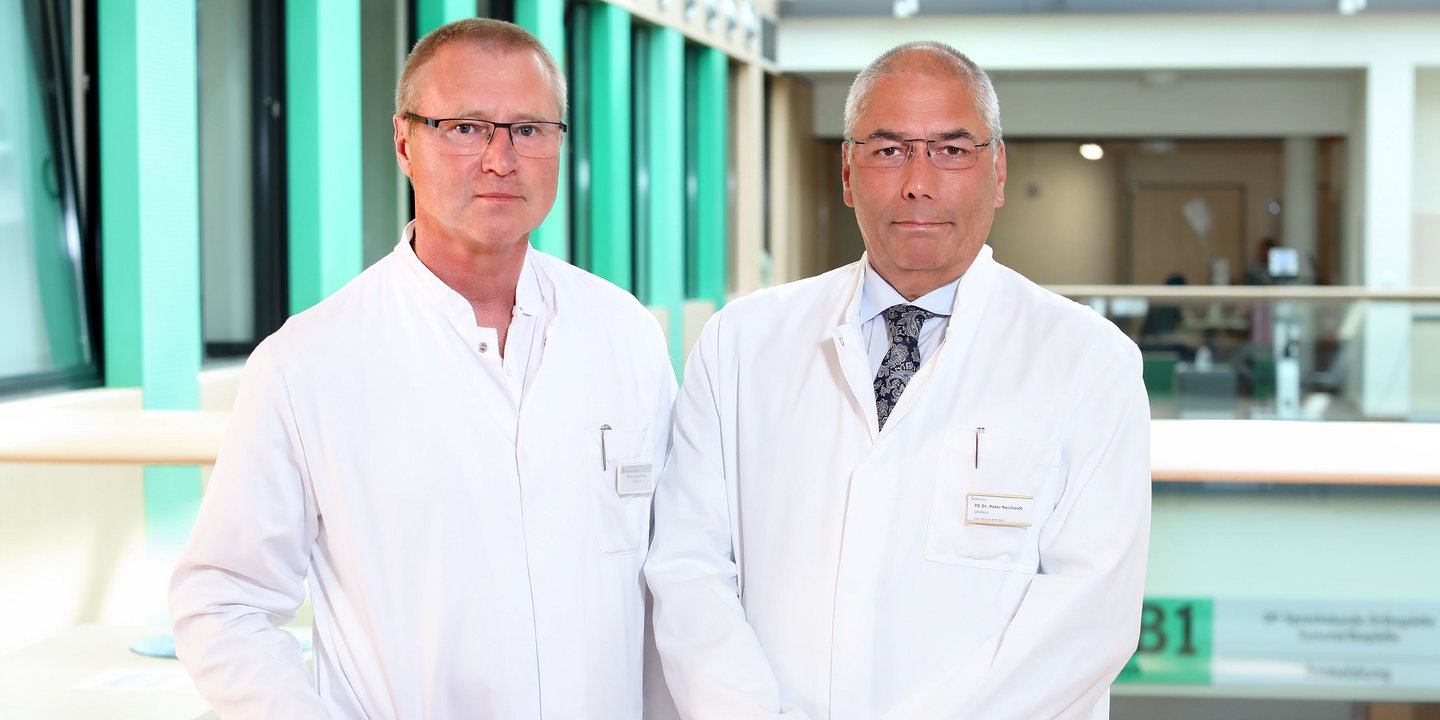
Mastectomy: information on breast removal surgery
About 70–80% of all tumours can be removed while preserving the breast. However, if the tumour is very large and malignant, or it involves a skin lesion or formation of multiple tumours in different regions of the breast, a mastectomy will be usually performed.
What is mastectomy?
The intervention is most often performed when the breast cancer is diagnosed. 'The term "mastectomy" describes complete breast removal in women or men,' says Dr. Anja Merte, Senior Physician and Head of the Breast Center at the Helios Hospital Erfurt. In many cases, it is possible to preserve the skin and a nipple in some cases, and this should be taken into account in various forms of breast reconstruction in the future.
Mastectomy is also commonly referred to as breast amputation or, in professional circles, Ablatio mammae.
When is a mastectomy performed?
'The breast-conserving therapy is performed in most cases of malignant breast tumours. One reason for this is that breast cancer is often detected at an early stage thanks to a well-developed screening network,' says Dr. Merte. About 20–30% of patients cannot avoid radical mastectomy.
Indications for mastectomy:
- A very large tumour and/or breast cancer accompanied by an inflammatory process;
- Vast symptoms of breast cancer (DCIS);
- Multiple tumour lesions in one breast (multicentric breast carcinoma);
- At the request of male/female patient;
- Concomitant diseases which make chemotherapy and radiation therapy impossible;
- Damage to the breast skin;
- Failure to remove the tumour during a previous surgery; in case of a second surgery, the breast conservation is impossible.
- A prophylactic mastectomy can be performed if a genetic defect increasing the risk of breast cancer is found. The actress Angelina Jolie is a perfect example of this. Her decision announced publicly several years ago attracted attention of the mass media.
"The breast-conserving therapy is performed in most cases of malignant breast tumours. One reason for this is that breast cancer is often detected at an early stage thanks to a well-developed screening network."
Dr. Anja Merte | Senior Physician and Head of the Breast Center at the Helios Hospital Erfurt
Male mastectomy
Each year 600–700 men develop breast cancer. They account for about 1% of all breast cancer cases. Accordingly, mastectomy can be also performed in men. In these cases, the doctor usually chooses the form of simple or modified radical mastectomy.
Mastectomy is a treatment method for abnormal breast growth in men, including malignant disease.
What issues should be considered with mastectomy?
The experts, especially in the centres certified by the German Cancer Society discuss the procedure jointly in a team of doctors, for example, at the so-called tumour conferences. This is followed by a conversation with the patient. Patients do not always want to undergo breast reconstruction. Moreover, in some cases, breast reconstruction is impossible. Individual conversations bring clarity to this issue.
In addition, all patients have an opportunity to get a second opinion.
What does mastectomy involve?
'For radical mastectomy, the surgeon removes the glandular tissue completely. The covering skin, nipple and connective tissue are also removed,' explains Dr. Merte.
If breast reconstruction is performed, the skin and/or nipple can be spared. However, it is only possible if the tumour has not affected the skin and nipples.
Different procedures are available for breast removal:
- Simple mastectomy: the entire mammary gland with the covering skin and nipple is removed. The lymph nodes in the axillary cavity remain in place.
- Skin sparing/ subcutaneous mastectomy: the body of the mammary gland is removed while the covering skin and nipple are spared.
- Modified radical mastectomy: removal of the entire breast with covering skin and nipple and removal of the lymph nodes from the axillary cavity.
- Radical mastectomy: in addition to the breast, the pectoralis major and minor muscles as well as the lymph nodes in the axillary cavity and around the breast bone are removed. However, doctors are currently refraining from this method.
After surgery: what to focus on?
The length of the recovery period mainly depends on the clinical picture and other necessary treatment and therapy methods. In general, patients need to follow a sparing regimen for two to four weeks.
Patients should follow the doctor's recommendations immediately after breast removal.
What to pay attention to after surgery:
- Sparing regime, but not sparing position
- Avoid physical activities (do not lift heavy things, do not make sudden movements, etc.) for six to eight weeks
- Women should wear special bras and epithesis, if necessary
- Breast epithesis is a moulded silicone inserts. They are not implanted, but worn by attaching to the body. They imitate the normal breasts in shape and weight and are either inserted into the bra or attached to the breast wall with glue.
- Avoid smoking (especially after reconstruction)
Lymphedema prophylaxis
Since the lymph nodes in the axillary cavity are often removed, this may lead to impaired drainage and, as a result, to the fluid accumulation in the arm tissues.
For prophylaxis, female patients should do the following:
- Ensure an elevated position of the arm by placing it on the pillow;
- If possible, the arm should be stretched and placed at a slight angle to the upper body;
- Avoid tight clothing;
- Avoid excessive heat exposure (sauna, sunbathing);
- Avoid arm loading.
What are the risks of mastectomy?
- Bruises and accumulation of wound exudate;
- Impaired process of wound healing/ infection;
- Lymphedema;
- Psychological stress, especially in women, due to the changed look of the body;
- Nerve disorders;
- Excessive scarring;
- Psychological stress, especially in women, due to the changed look of the body.
Breast reconstruction: what are the options?
The breast can be reconstructed immediately or during the second surgery using extraneous or endogenous material or tissue.
Each procedure has advantages and drawbacks that are discussed individually with each patient:
"The breast reconstruction may have both psychological and physical reasons. Appearance of the woman's body without breasts changes and this can be stressful for the patient."
Dr. Anja Merte | Senior Physician and Head of the Breast Center at the Helios Hospital Erfurt
Foreign materials
- Breast implants: moulded inserts filled with silicone are placed under or over the pectoralis major muscle, possibly combined with a mesh.
- Dilator: An expandable prosthesis is inserted under or over the pectoralis major muscle and replaced with an implant after skin stretching.
Endogenous material
- Flap grafting: when such plastic surgery is performed, the tissues from other body areas (back, abdomen, buttocks) are transferred to the breast wall and a new breast is formed. The doctors distinguish between tubed pedicle flaps grafting and free flap grafting.
'The breast reconstruction may have both psychological and physical reasons. Appearance of the woman's body without breasts changes and this can be stressful for the patient. However, the reconstructed breast is not like a natural breast. It is less sensitive,' says Dr. Anja Merte.
Related stories:
-
Male breast cancer: detection at an advanced stage
-
Breast reconstruction after MRM
-
More information about Helios Hospital Erfurt
Do you need more information about Helios Hospitals or do you want to schedule your treatment?
Please contact our Helios International Office. We will gladly advise you!













